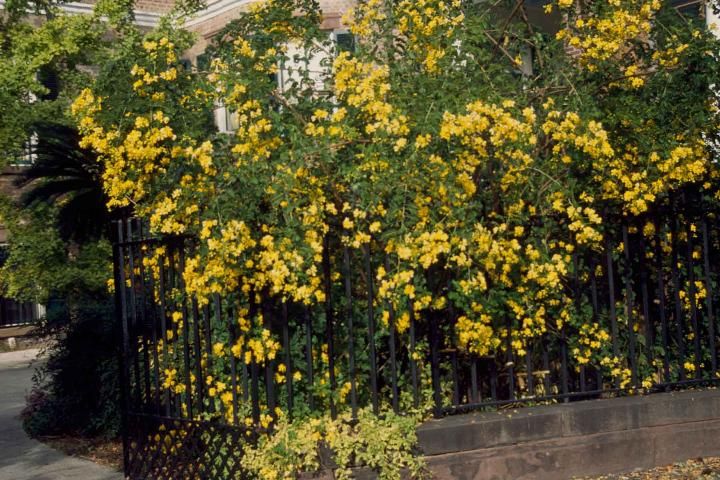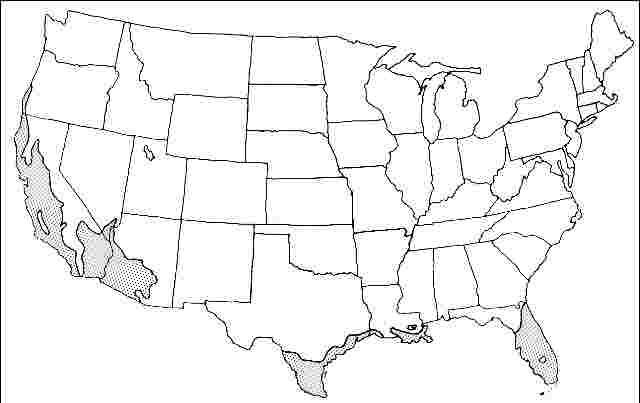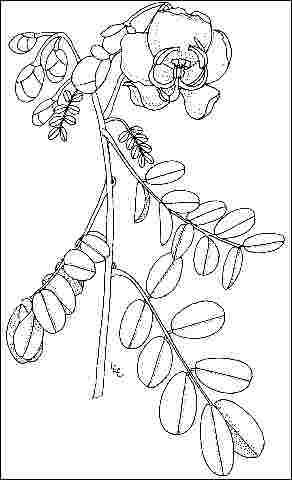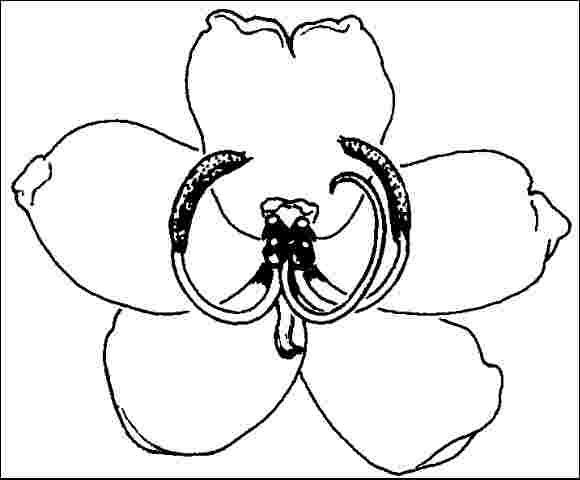Introduction
While other trees are preparing for winter, butterfly bush is just waking up. This sprawling, semi-evergreen shrub, reaching a height of 8 to 10 feet with an equal spread, produces blossoms in fall that resemble golden butterflies. Bright yellow flowers appear at a time of year when little else is in bloom. This plant has a place in any sunny landscape.

Credit: Ed Gilman, UF/IFAS
General Information
Scientific name: Senna bicapsularis
Pronunciation: Sen-nuh bye-kap-soo-LAIR-iss
Common name(s): Butterfly bush
Family: Fabaceae
USDA hardiness zones: 9A through 11 (Figure 2)
Origin: not native to North America
Invasive potential: not assessed/incomplete assessment
Uses: specimen; container or planter; deck or patio; highway median

Credit:
Description
Height: 8 to 12 feet
Spread: 8 to 10 feet
Crown uniformity: irregular
Crown shape: vase, round
Crown density: open
Growth rate: moderate
Texture: fine
Foliage
Leaf arrangement: alternate (Figure 3)
Leaf type: even-pinnately compound
Leaf margin: entire
Leaf shape: obovate, ovate
Leaf venation: pinnate
Leaf type and persistence: semi-evergreen
Leaf blade length: less than 2 inches
Leaf color: green
Fall color: no color change
Fall characteristic: not showy

Credit:
Flower
Flower color: yellow
Flower characteristics: very showy

Credit:
Fruit
Fruit shape: pod or pod-like
Fruit length: 1 to 3 inches, 3 to 6 inches
Fruit covering: dry or hard
Fruit color: brown
Fruit characteristics: does not attract wildlife; not showy; fruit/leaves not a litter problem
Trunk and Branches
Trunk/bark/branches: branches droop; not showy; typically multi-trunked; thorns
Pruning requirement: needed for strong structure
Breakage: susceptible to breakage
Current year twig color: brown, green
Current year twig thickness: medium
Wood specific gravity: unknown
Culture
Light requirement: full sun, partial sun, or partial shade
Soil tolerances: clay; sand; loam; slightly alkaline; acidic; well-drained
Drought tolerance: moderate
Aerosol salt tolerance: moderate
Other
Roots: not a problem
Winter interest: no
Outstanding tree: no
Ozone sensitivity: unknown
Verticillium wilt susceptibility: unknown
Pest resistance: resistant to pests/diseases
Use and Management
When knocked down by frost, the stems should be cut off at ground level, and vigorous sprouts will emerge in spring. Butterfly bush benefits from frequent pinching of the young shoot tips during the growing season up to the beginning of September; this encourages branching and increases the number of flowers. Appropriate training can produce a very small specimen tree which looks nice growing in a low ground cover. Trees often fall over and will require staking to hold them upright. For this reason, it is easiest to place it in a shrub border among other shrubs that will help hold it erect. It is well worth the effort to stake a specimen tree, if needed, since the tree is simply stunning in flower.
Butterfly bush needs full sun for best growth and flowering, but needs little care once established besides occasional watering during drought. It is tolerant of many soil conditions. It is a good option for highway median or roadside locations or cluster plantings.
Propagation is by seed or cuttings.
Pests
Foliage and flower buds are often eaten by caterpillars in the fall, but these can be easily picked off by hand. Damaged or stressed plants can be infested with trunk borers. Candlestick plant is otherwise seldom plagued by insect pests or diseases.
Diseases
No diseases are of major concern.